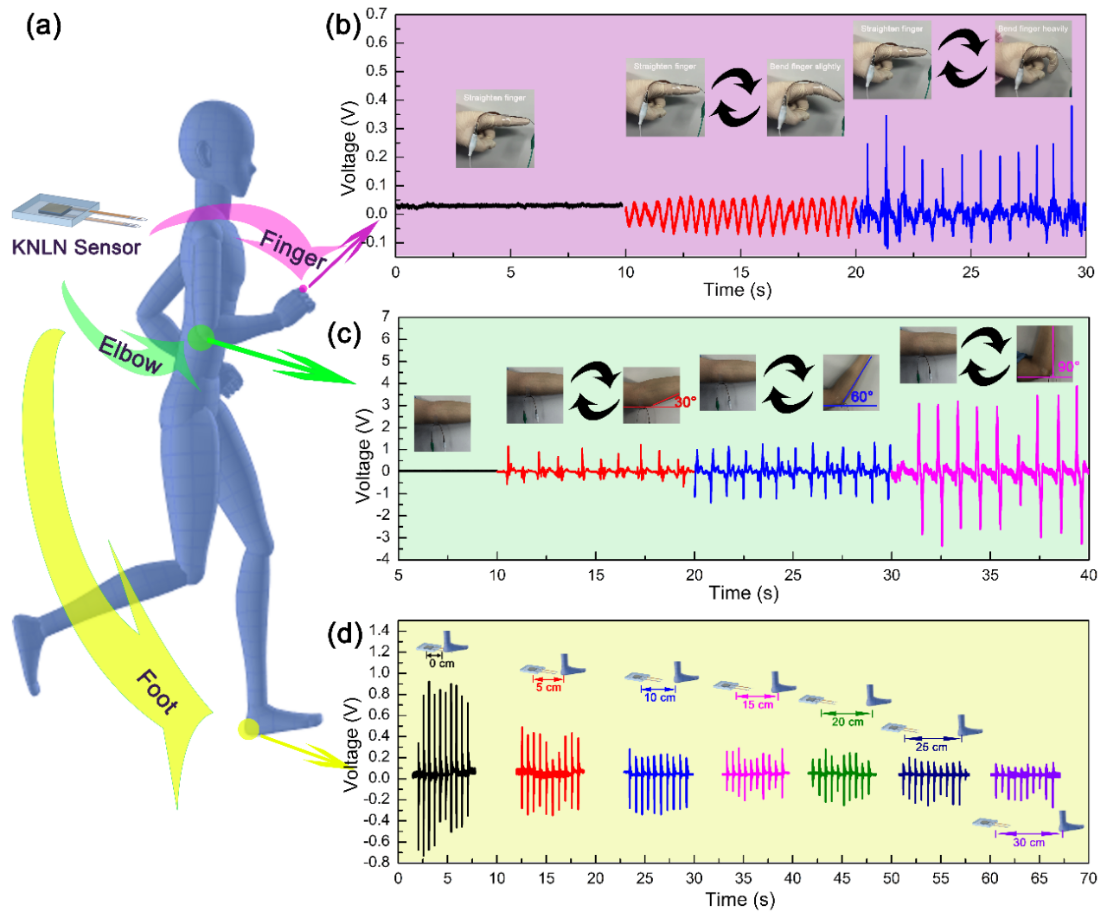Recently, “Ultrahigh Piezoelectric Coefficients of Li-doped (K,Na)NbO3 Nanorod Arrays with Manipulated O-T Phase Boundary: Towards Energy Harvesting and Self-powered Human Movement Monitoring”was published in world-known international journal Nano Energy in the field of nano energy by Professor Gu Haoshuang ' s team. It is a markable progress in lead-free piezoelectric micro-nano sensor.
Piezoelectric materials can realize the conversion between mechanical energy and electrical energy, and has been widely used in our daily life. In recent years, lead-free piezoelectric one-dimensional (1D) nanostructures have exhibited great potential in building biocompatible micro/nano-energy harvesters and self-powered smart sensors. Although lead-based one-dimensional piezoelectric nanomaterials such as PZT and PMN-PT have high piezoelectric constant and energy conversion efficiency, the toxic lead element restricts the practical application of such high-performance piezoelectric nanomaterials in many fields such as wearable and implantable devices. The development of high-performance lead-free piezoelectric one-dimensional nanomaterials has always been a hot topic in the field of piezoelectric nanomaterials.

Figure 1 Self-powered human movement monitoring performance of Li doped potassium sodium niobate lead-free piezoelectric nanoarrays
Potassium sodium niobate (KNN) based lead-free piezoelectric nanomaterials possess excellent piezoelectric properties as well as satisfied biocompatibility, and are believed to be one of the most promising lead-free piezoelectric materials. However, there is still a big gap between the piezoelectric properties of KNN-based lead-free piezoelectric nanomaterials and lead-based materials. The key problem to be solved in this field is how to improve the piezoelectric constant of materials. In this study, the orthogonal-quadrugonal phase boundary at room temperature was constructed in the KNN single crystal nanorods array around the A-site cation doping pathway. Combined with the orbital hybridization caused by doping modification and the stress release accompanying the growth process of nanorods, a breakthrough in the piezoelectric constant of the piezoelectric nanorods in this system was achieved, and high-performance lead-free piezoelectric nanomaterials with average d33 up to 554 pm / V and peak d33 up to 814 pm / V were successfully grown. Based on the highly sensitive energy harvesting characteristics of materials, a self-powered wearable sensing prototype device is developed to monitor the movement of human joints, which has broad application prospects in the field of intelligent motion health monitoring.
Professor Gu Haoshuang 's team has long been working on low-dimensional nanomaterials and their energy conversion and sensor devices. His team has published a series of papers of high quality in international authoritative journals such as ACS Nano, Nano Energy and Sensor and Actuators B. Also, they have undertaken major research projects of the National Natural Science Foundation of China, general program and projects like the 863 project of the Ministry of Science and Technology. Since 2021, the members of the research group have made many important progress in the field of thermoelectric and photovoltaic energy conversion devices. The relevant results are published in international journals such as Journal of Materials Chemistry A and Journal of Energy Chemistry. This work is another breakthrough in the field of piezoelectric energy conversion by the research group. The first author of this paper is Dr. Jiang Lei, grade 2018, from the College of Physics and Electricity. Professor Wang Zhao, a team member, and John Wang, a collaborator from the National University of Singapore, are co-authors.
Link to the article: https://doi.org/10.1016/j.nanoen.2021.106072